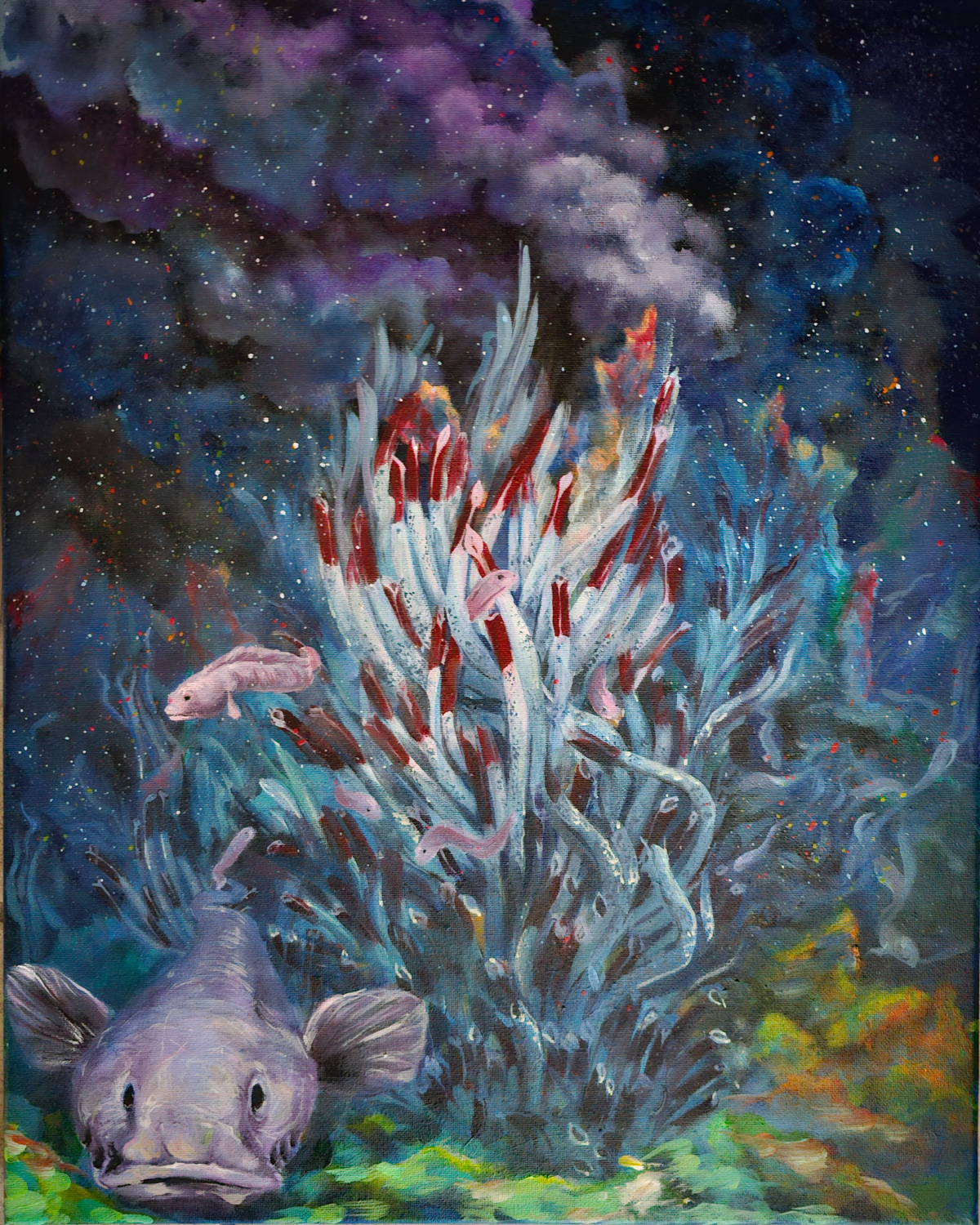The response to our 2024 Science Without Borders® Challenge has been overwhelming! We’ve been blown away by the sheer number of submissions we received from aspiring young artists worldwide. Earlier this week, we proudly unveiled the finalists in the 11-14 age group, and now we’re ecstatic to announce the finalists in the 15-19 year-old category.
These young artists hail from all corners of the globe, including Canada, India, Indonesia, Korea, Taiwan, the United Kingdom, and the United States. You will be amazed at their incredible artwork and how well they captured the essence of the theme, “Hidden Wonders of the Deep.” In their artwork, students portrayed a variety of deep-sea creatures, such as anglerfish, strawberry squid, basket stars, Japanese spider crabs, oarfish, and tubeworms. They also depicted mysterious deep-sea environments like whale falls and hydrothermal vents. We were amazed by these students’ creativity, execution of the theme, and artistic abilities.
Without further ado, please meet our talented 15-19 year old finalists! These exceptional artists have not only showcased their incredible talents, but also their unwavering passion for marine conservation.
"Under the Sea" by Nadia Cho, Age 16, United States of America
Artist's Statement: In the bathyapelagic zone, tubeworms rest around hydrothermal vents. These tubeworms may seem a little grotesque by their mass numbers, but they are important for the surrounding life by the hydrothermal vents. The tubeworms have a symbiotic relationship with chemosynthetic bacteria inside their body. As the tubeworms transfer hydrogen sulfide from the vent water, the bacteria converts the hydrogen sulfide to food that the tube worm can eat. Since there are many tubworms, it provides a perfect shield to the Zoarcid fish who seek shelter from predators in the deep. Although the tubeworms may provide safety for a few species, they reminded me of the corals in coral reefs and how they provide the same thing for many different species. Hence why I illustrated the type of ecosystem the tubeworms live in and emphasize the beauty of its ecosystem.
Stay tuned! We will announce the winners in the next couple of weeks.
